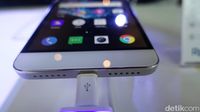

One of the main characteristics of the display is its type/technology, on which depends its performance. RAM frequency relates directly to the rate of reading/writing from/in the RAM memory.ĭisplay The display of a mobile device is characterized by its technology, resolution, pixel density, diagonal length, color depth, etc. More channels mean higher data transfer rates. Information about the number of RAM channels integrated in the SoC. Information about the type of RAM used by the device. Data in the RAM is lost after the device is turned off or restarted. RAM (Random-Access Memory) is used by the operating system and all installed applications. The frequency is the clock rate of the graphic processor (GPU), which is measured in Megahertz (MHz) or Gigahertz (GHz). GPU can also perform computation in applications traditionally handled by the CPU. In mobile devices GPU is usually utilized by games, UI, video playback, etc. GPU is a graphical processing unit, which handles computation for 2D/3D graphics applications. It is measured in Megahertz (MHz) or Gigahertz (GHz). The frequency of the processor describes its clock rate in cycles per second. They increase the performance of the device allowing the execution of multiple instructions in parallel. Presently, besides single-core processors, there are dual-core, quad-core, hexa-core and so on multi-core processors.
Coolpad usb software#
Information about the set of instructions the processor can execute.Ī CPU core is the processor unit, which executes software instructions. The instruction set architecture (ISA) is a set of commands used by the software to manage the CPU's work. 64-bit CPUs provide better performance than 32-bit ones, which on their part perform better than 16-bit processors. The CPU bits are determined by the bit-size of the processor registers, address buses and data buses. Its main function is to interpret and execute instructions contained in software applications.Ģx 2.0 GHz Cortex-A75, 6x 1.8 GHz Cortex-A55 The value in nanometers represents half the distance between elements that make up the CPU.ĬPU is the Central Processing Unit or the processor of a mobile device. Information about the process technology used in manufacturing the chip. The SoC integrates different hardware components such as the CPU, GPU, memory, peripherals, interfaces, etc., as well as software for their functioning. System on Chip (SoC) A system on a chip (SoC) includes into a single chip some of the main hardware components of the mobile device. A further development of the technology is called LTE Advanced. It has been developed by the 3GPP based on the GSM/EDGE and UMTS/HSPA technologies in order to increase the speed and capacity of wireless data networks.

LTE is deemed to be the fourth generation (4G) of mobile communications technology. It has been developed by the 3GPP and its major advantage is the provision of greater bandwidth and spectral efficiency, due to the W-CDMA technology. Based on the GSM standard, it is deemed as a 3G mobile network standard. UMTS stands for Universal Mobile Telecommunications System.

It is developed as an alternative to the W-CDMA standard in China by the Chinese Academy of Telecomunications Technology, Datang Telecom and Siemens AG, and combines TDMA and CDMA.
Coolpad usb code#
TD-SCDMA (Time Division Synchronous Code Division Multiple Access) is a 3G standard for mobile networks. Compared to other 2G and 2.5G standards like GSM and TDMA, it provides increased data transfer speeds and allows more subscribers to connect simultaneously to the network. It has been improved with the addition of General Packet Radio Services (GPRS) and later via the Enhanced Data rates for GSM Evolution (EDGE) technology.ĬDMA (Code-Division Multiple Access) is a channel access method for communications within mobile networks. GSM (Global System for Mobile Communications) was developed to replace the analog cellular network (1G), therefore it is referred to as a 2G mobile network. Networks A mobile (cellular) network is a radio system, which allows a large number of mobile devices to communicate with each other. Materials used in the fabrication of the device's body. Information about the colors, in which the device is available in the market. Applies for devices in the form of a rectangular parallelepiped. Information about the weight of the device in different measurement units.Įstimated volume of the device, calculated from the dimensions provided by the manufacturer. Information about the thickness/depth of the device in different measurement units. the vertical side of the device when it is used in its standard orientation. the horizontal side of the device when it is used in its standard orientation.

Body materials, available colors, certifications. Design Information about the dimensions and weight of the device, shown in different measurement units.


 0 kommentar(er)
0 kommentar(er)
